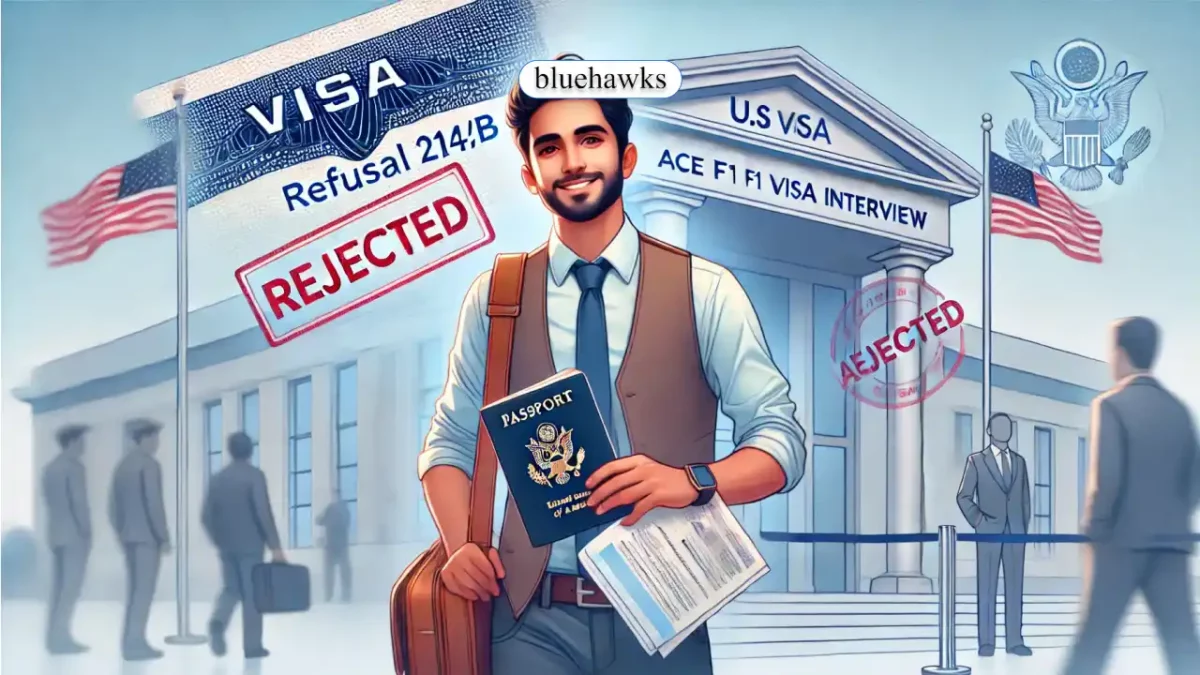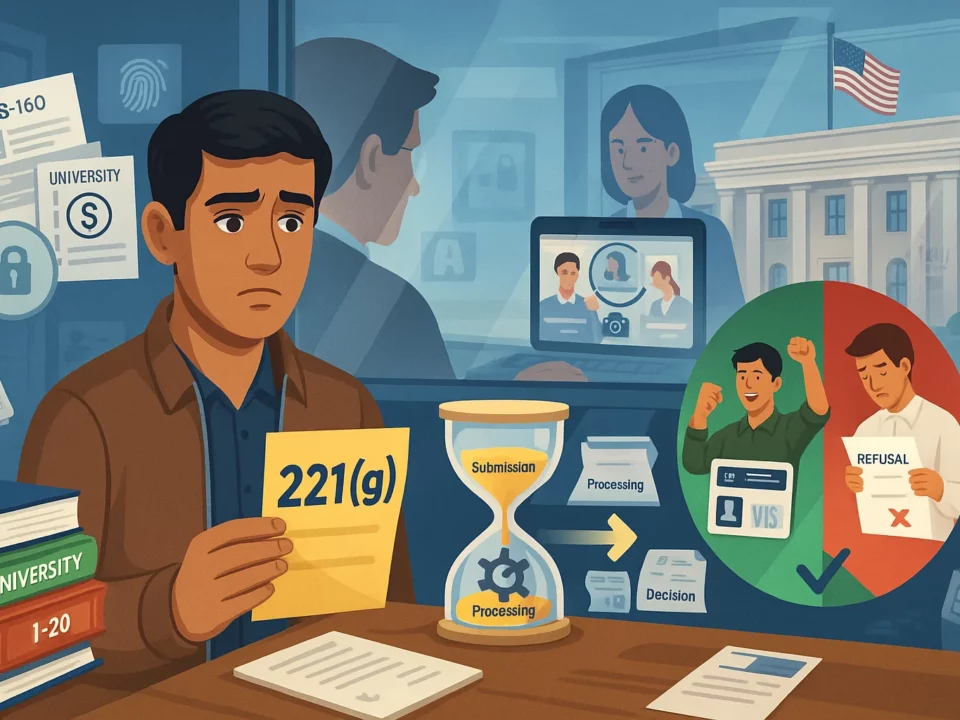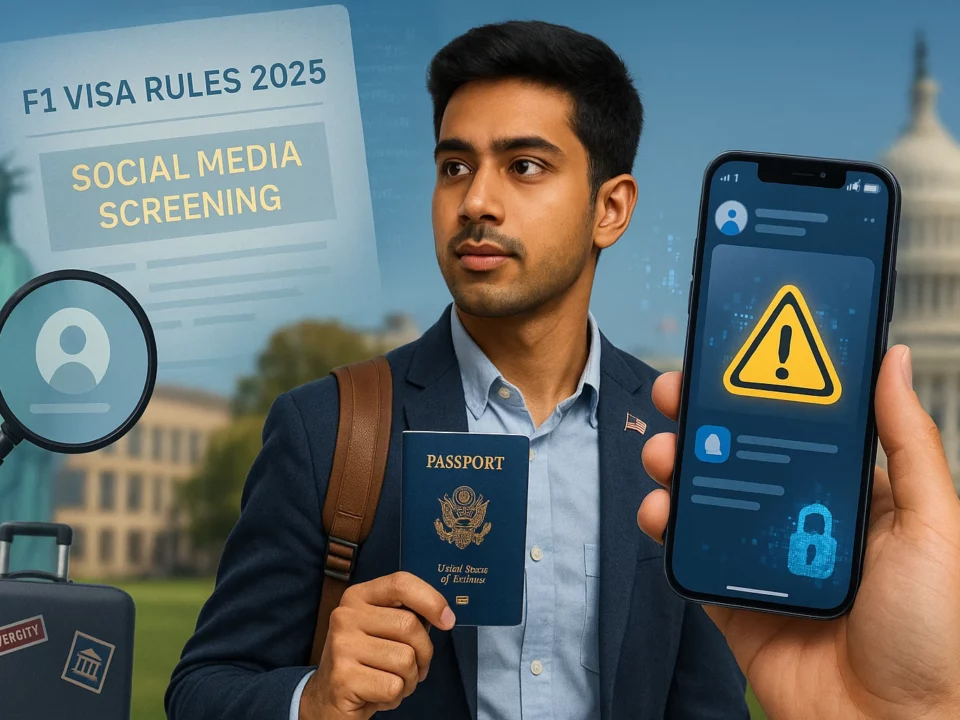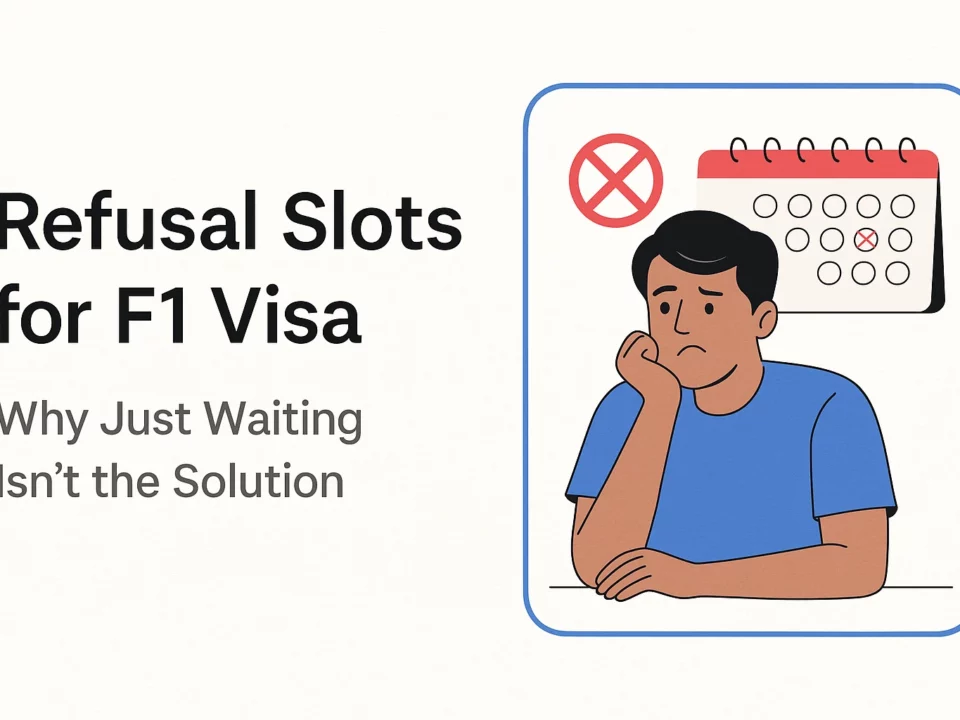Refusal 214(b): How to Ace Your Next F1 Visa Interview in 2025

Refusal 214(b): How to Ace Your Next F1 Visa Interview in 2025
Estimated reading time: 5 minutes
Getting your F1 visa refused under section 214(b) feels like a punch in the gut, doesn’t it? After all that effort—choosing the right university, cracking your exams, and arranging funds—getting denied over a short interview is frustrating. But here’s the good news: a 214(b) refusal is not the end of the road. Many students we’ve worked with at Bluehawks EduAbroad have turned their visa refusals into approvals just by improving their approach.
So, if your visa got denied, don’t lose hope just yet. In this blog, we’ll break down what went wrong, how to fix it, and how you can nail your next attempt.
What Exactly is a 214(b) Visa Refusal?
Imagine this: You’re sitting in front of the visa officer, answering their rapid-fire questions. You think you did okay, but then—boom!—you hear, “Unfortunately, you are not eligible for a visa at this time.”
That’s a 214(b) refusal. It simply means that, at that moment, the officer wasn’t convinced that you:
- Have strong enough reasons to return to India after your studies.
- Are a genuine student with clear academic and career goals.
- Have the financial support needed to fund your education.
The tricky part? The officer makes this decision in just a few minutes, based on how well you communicate your intent. But don’t worry—there’s a way to fix this.
Why Do Students Get 214(b) Refusals?
Let’s talk about the most common reasons why visas get denied and how you can avoid these pitfalls.
1. Weak Ties to India
If the visa officer thinks you’re planning to settle in the U.S. after graduation, they won’t approve your visa. You need to prove that you have strong reasons to return, like family responsibilities, job opportunities, or property in India.
✅ Fix It: Talk about your future plans in India, mention job prospects, and highlight family connections that bring you back.
2. Confusing or Nervous Answers
Sometimes, students get nervous and start rambling. Other times, they contradict themselves without realizing it. For example, if you say you chose your university because of affordability but then can’t explain how you’re funding it, that’s a red flag.
✅ Fix It: Be clear, confident, and stick to the point. If you’re unsure, practice mock interviews with experts.
3. Financial Doubts
If your funds aren’t clearly documented or your sponsor’s financial background is unclear, the officer might doubt whether you can actually afford your education.
✅ Fix It: Show solid proof of funds—bank statements, scholarships, or affidavits from sponsors.
4. Poor Interview Performance
Some students memorize their answers but sound robotic. Others get so nervous that they fumble basic questions. If your body language is off or you seem unprepared, the officer won’t be convinced.
✅ Fix It: Confidence is key. Speak naturally, maintain eye contact, and avoid over-explaining.
How to Ace Your Next F1 Visa Interview
So, you got a 214(b) refusal. What now? Here’s how to bounce back stronger for your next attempt.
1: Understand What Went Wrong
Take a deep breath and think about your previous interview. Which questions threw you off? Did you hesitate, contradict yourself, or struggle to justify your choices? Once you pinpoint your weak spots, you can start fixing them.
2: Strengthen Your Answers
- Be ready to explain why you picked your university and course.
- Connect your degree to career opportunities back in India.
- If asked about other university options, don’t say “I didn’t apply anywhere else”—instead, explain why this one was the best fit.
3: Show Strong Home Ties
- Talk about your family, job prospects, or business in India.
- If your parents have a business, mention how you plan to contribute after graduation.
- Highlight how your education aligns with India’s job market.
4: Get Your Financials in Order
- Clearly explain who is funding your studies.
- If your parents are sponsoring you, be ready to discuss their income sources.
- Show that your funds cover tuition, living expenses, and unexpected costs.
5: Practice Like Your Future Depends on It (Because It Does!)
- Don’t memorize answers—understand your own story.
- Practice with experts who can give real feedback.
- Record yourself answering common questions and improve based on that.
How Bluehawks EduAbroad Can Help You Succeed
At Bluehawks EduAbroad, we’ve helped hundreds of students turn their 214(b) refusals into visa approvals. Here’s how we do it:
- Personalized mock interviews that mimic real visa situations.
- Detailed feedback on what to improve and how.
- Training from experts who understand visa officer decision patterns.
- Special guidance for second and third attempts.
- Success stories from students just like you!
Success Story: From Visa Refusal to Approval
Meet Ganesh. He’s an NIT graduate who had his F1 visa refused twice under 214(b). The first time, he struggled with understanding the officer’s questions. The second time, he failed to justify why he chose SUNY Utica over other SUNY universities.
When he came to Bluehawks EduAbroad, we:
- Fixed his answers and made them more structured.
- Trained him to handle tricky questions with confidence.
- Ran multiple mock interviews until he felt 100% ready.
On his third attempt, he walked in with confidence and got his F1 visa approved! 🎉 Real Stories of DS-160 Mistakes in the F-1 Visa Application
Final Thoughts: Don’t Let a 214(b) Refusal Stop You!
A 214(b) refusal doesn’t mean you’re not qualified—it just means you need to improve how you present yourself. With the right preparation, your next interview can be a success.
At Bluehawks EduAbroad, we’re here to help you every step of the way. So, if you’ve faced an F1 visa refusal, don’t let frustration take over. Instead, prepare smarter, get expert guidance, and go for your next attempt with confidence.
🚀 Ready to make your comeback? Book a free consultation today! Let’s get you to your dream university in the U.S. Click Here to Get Started!




